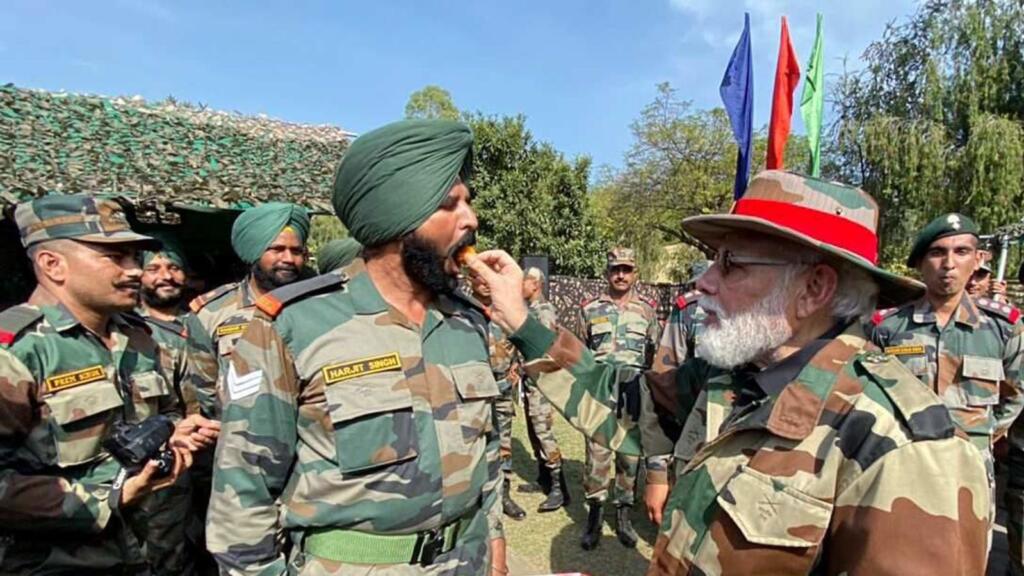Finance Minister Nirmala Sitharaman presented the budget for fiscal year 2024-25 in Parliament today. The defence allocation remains steady at Rs 6.21 lakh crore, matching the interim budget from February. This represents a modest 4.72% increase from the previous year’s budget of Rs 5.93 lakh crore. While the numbers may seem unchanged at first glance, a closer look reveals a nuanced approach to bolstering India’s defence capabilities.
Breakdown of Defence Allocations
The budget for new military equipment saw a slight uptick. Rs 1.72 lakh crore is now earmarked for purchasing tanks, ships, fighter jets, and submarines. This is a small increase of Rs 10,000 crore from last year’s Rs 1.62 lakh crore. Although the rise is minimal, it still allows for continued investment in crucial defence technologies.
Revenue and Pensions: Maintaining Operational Readiness
The revenue budget, covering salaries and daily operations, stays at Rs 2.82 lakh crore. Similarly, the pensions budget remains unchanged at Rs 1.41 lakh crore. These allocations ensure the armed forces can maintain their current level of operational readiness and fulfill commitments to retired personnel.
Concerns Amidst Global Instability
The minimal increase in overall defence spending has raised eyebrows, especially given the current global tensions. Many countries are boosting their defence budgets due to Chinese aggression in Asia and Russian actions in Europe. India’s ongoing border standoff with China adds to these concerns.
Questions arise about India’s preparedness for potential conflicts, particularly against China’s larger economy and military might. However, the government’s strategy may not be as straightforward as the numbers suggest.
Border Roads Organisation (BRO) Boost
While overall defence spending sees little change, the Border Roads Organisation receives a significant 30% increase. Its budget now stands at Rs 6,500 crore, continuing a trend of substantial hikes in recent years. This focus on border infrastructure demonstrates the government’s awareness of the Chinese threat and its commitment to addressing critical weaknesses.
Strategic Importance of Border Development
Improved roads, bridges, and facilities in border areas will enhance India’s ability to respond quickly to potential incursions. This targeted investment aims to:
1. Match China’s border development
2. Enable rapid troop mobilization
3. Deter Chinese aggression through improved logistics
Defence in Depth: A Multi-layered Approach
By strengthening border infrastructure, India is implementing a defence-in-depth strategy. This approach involves:
1. Creating multiple layers of defence
2. Improving supply lines to forward areas
3. Enhancing surveillance and early warning capabilities
These improvements make it more challenging for potential adversaries to exploit vulnerabilities along India’s vast borders.
Balancing Act: Meeting Various Defence Needs
The budget allocation reflects a delicate balance between various defence requirements:
1. Modernization of equipment
2. Operational readiness
3. Personnel welfare
4. Strategic infrastructure development
Long-term Benefits of Infrastructure Investment
Investing in border roads and facilities offers several long-term advantages:
1. Economic development of border regions
2. Improved civilian access to remote areas
3. Enhanced tourism potential in border states
4. Dual-use infrastructure benefiting both military and civilian sectors
These benefits extend beyond purely military considerations, contributing to overall national development.
Challenges and Future Outlook
Despite the strategic focus on border infrastructure, challenges remain:
1. Keeping pace with rapidly evolving military technologies
2. Addressing the increasing pension burden
3. Balancing immediate operational needs with long-term modernization goals
Future defence budgets may need to address these issues more comprehensively to ensure India’s armed forces remain prepared for evolving threats.
Conclusion: A Nuanced Approach to Defence Preparedness
While the headline defence budget figures may seem unchanged, the government’s strategy focuses on addressing critical weaknesses. The emphasis on border infrastructure shows a nuanced approach to defence preparedness. This targeted spending aims to bolster India’s position along its contested frontiers, potentially offsetting China’s advantages in a more cost-effective manner.
As geopolitical tensions persist, India’s defence strategy must continue to evolve. The current budget allocation, with its focus on border infrastructure, represents a step towards a more resilient and responsive defence posture. However, ongoing assessment and adaptation will be crucial to ensure India’s armed forces remain equipped to face future challenges in an increasingly complex security environment.
ALSO READ: Why are these Ministers Boycotting the upcoming NITI Aayog meeting?
